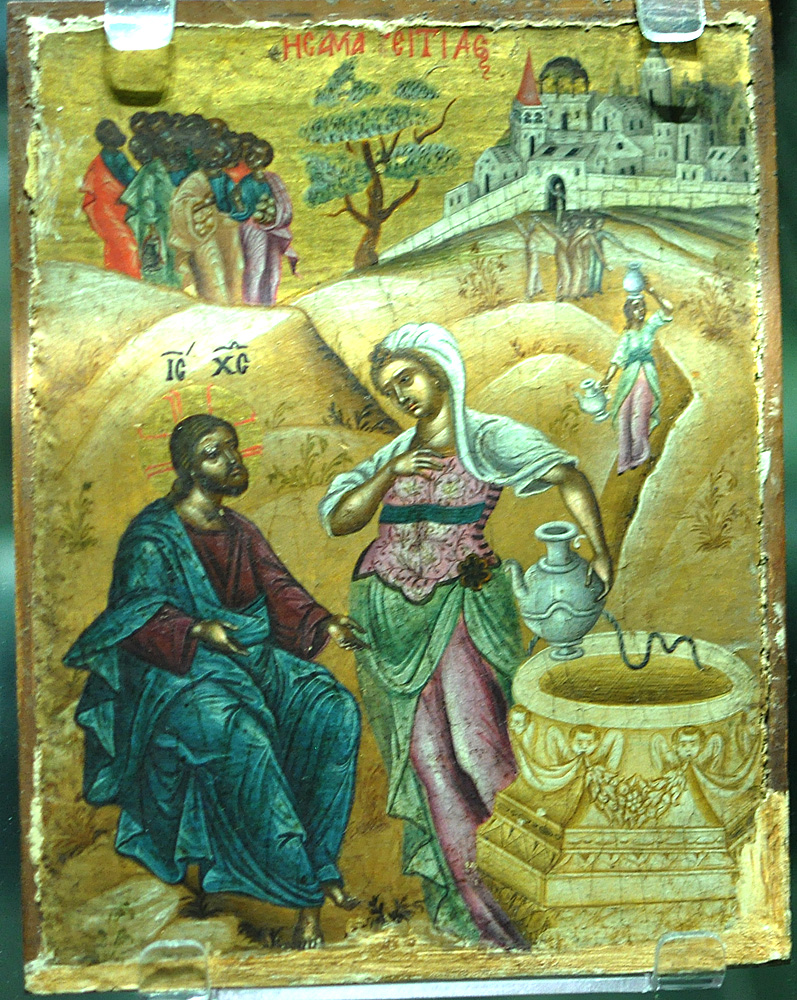
Jesus and the Samaritan Woman
Veneto-Cretan icon
Beginning of the 17th century
Pinacoteca Vaticana, Rome
This icon is faithful to John 4:4-26 (Vulgate) in both its visual details and its underlying theology. Jesus sits at Jacob's well and speaks with the Samaritan woman. The well is said to be deep (4:11), so the artist provides a rope. The woman's solitary approach to the well is pictured in the background, as is the nearby city of Sichar, where several townspeople wave their arms at her as if to express rejection.
The text calls Sichar a civitas, which commonly designates a substantial walled city, so it is pictured accordingly. The icon also shows the disciples approaching from "the city," apparently along a different path, with food they have purchased there (4:8, 27).
Theologically, the icon captures the key distinction in John's gospel between "living water," which flows from Jesus, and the natural water found in Jacob's well. The Vulgate of 4:6 and the Greek original both distinguish between the "well" where the woman draws water (puteus, φρεαρ) and the "spring" (fons, πηγη) that Jesus sits "above" (supra, επι). The Glossa Ordinaria on this verse cites Augustine for the difference: "Fons is the name for any place where water flows from the earth to the surface, but if it flows below the surface it is called a puteus" (V, 1085-86). The distinction, ignored even by the literalist Douay-Reims translation, is preserved in this icon. Jesus sits with his feet dangling above a spring from which water flows onto the surface. In the citations from Augustine the woman represents "the Church of the Gentiles" coming now to Jesus to be made righteous by him (ibid.). Accordingly, in the icon the spring water laves the woman's right foot and also the base of the well of Jacob, who is the common ancestor of Samaritans and Jews.
View this image in full resolution.
Read more about The Samaritan Woman at the Well.
Photographed at the site by Richard Stracke, shared under Attribution-NonCommercial-ShareAlike license.